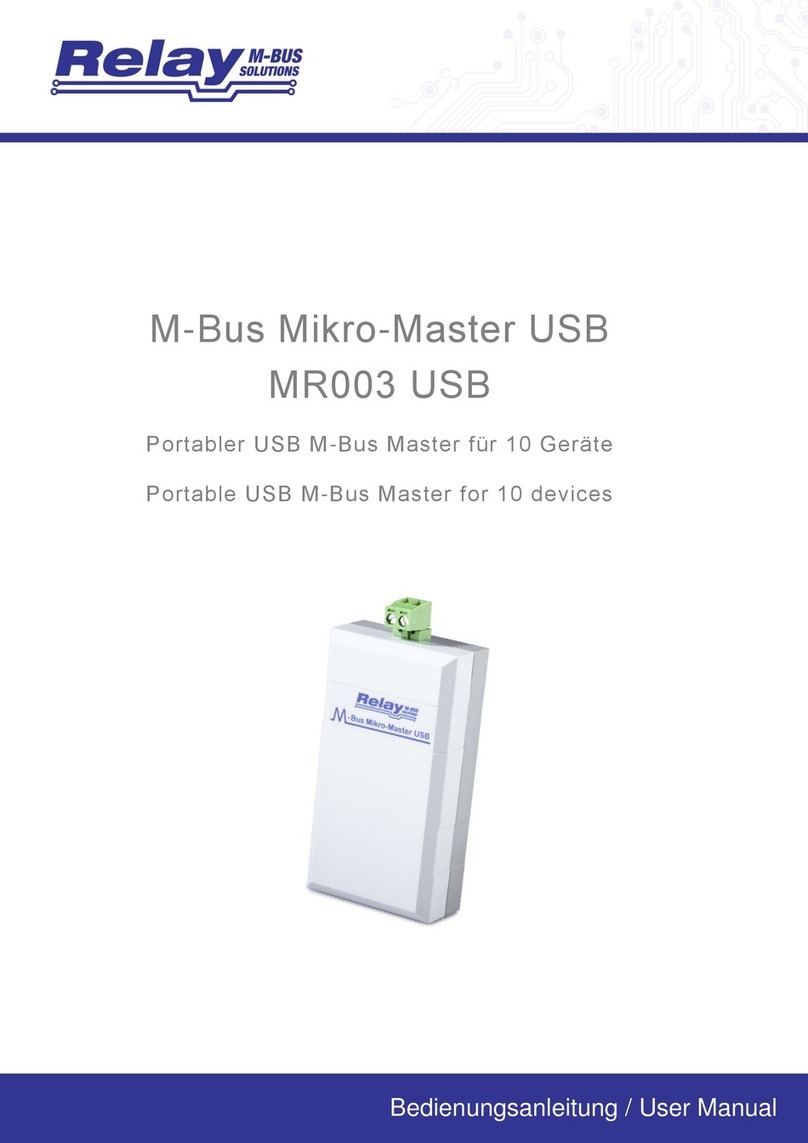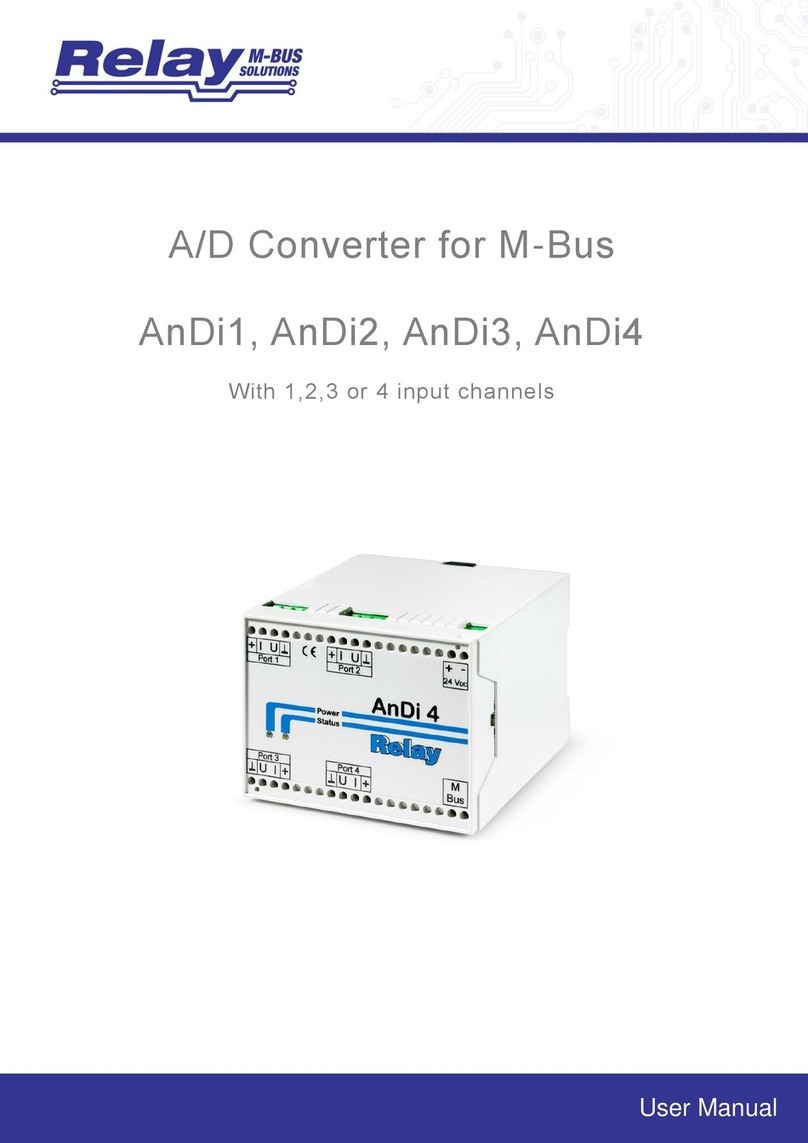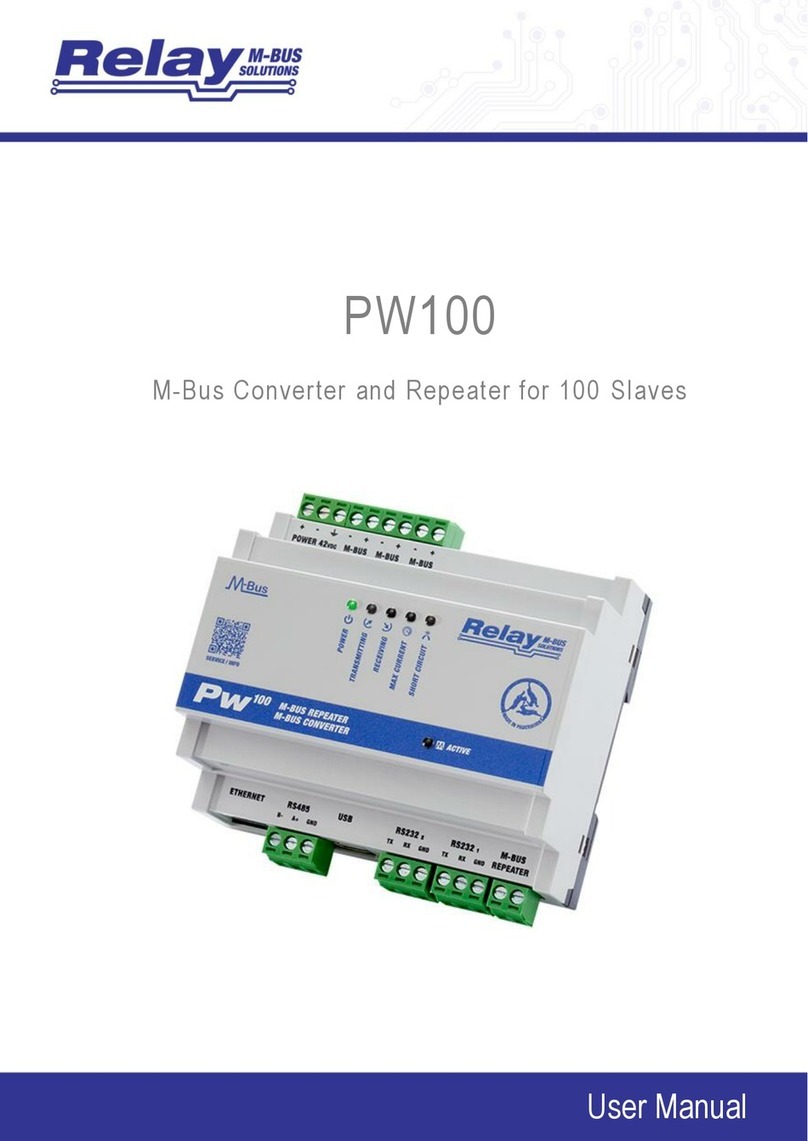3 Parameterization using MBCONF
The device is supplied with a basic configuration (address 0, unprotected) and must be adapted
by the customer to the respective installation. Parameterization requires the MBCONF program.
You will find the free software on our CD "Tools & Docs" and for download on our homepage
www.relay.de.
3.1 Installation
The software MBCONF for configuration of the pulse adaptor is a 32-bit application, which can
be executed on IBM-PC compatible computers under the operating systems Windows 10 / 8.1 /
7 / XP / 2000 / 98 / 95. The desktop PC or laptop must have a free serial RS232C interface to
connect the M-Bus level converter. You can alternatively use an USB or Ethernet to M-Bus level
converter with a driver for a virtual serial port. We recommend our service tool Micro-Master
USB (art.no. MR003USB). The PadPuls M1 to be parameterized must be connected directly (i.e.
as only M-Bus device) to the M-Bus output of the level converter.
Please run the file “MBCONF_SETUP.EXE” from Windows Explorer or via “Start – Execute” to
install the software. Subsequently you select the language of the installation procedure. The
setup software can create a program group and a link on the desktop on demand. You can then
execute both versions for German and English language either from start menu or desktop.
3.2 Operation
After program start the user operates the software according to the Windows conventions with
the mouse or the keyboard. If you stay with the mouse on a button or an input field, then a hint
to its function appears. Light-grey fields and boxes cannot be edited.
All input fields and buttons have an underlined letter. The function can be activated by
simultaneous pressing of the keys [ALT] and the respective letter. Within dialogs the cursor can
be moved with the keys [TAB] or [SHIFT] [TAB] forward and backword.
[SPACE] activates or deactivates selection boxes. Multiple selection boxes (arrow at the right
edge) can be activated with []. The user then selects an entry with [] and []. By pressing
[RETURN] the selected entry is taken over. With [ESC] the selection box is left without transfer.
The program is arranged as a sheet system. The sheet “Info” contains general options of the
communication with the M-Bus device to be configured. In this sheet the user can select the
serial port of the PC, the baudrate of the PC, the baudrate of the M-Bus device and the M-Bus
primary address which is used for communication. After a successful connection with the M-Bus
device, further manufacturer information is shown in the sheet “Info” and additional device-
specific sheets are displayed.






























